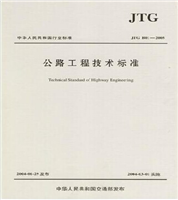




The Standard systematically summarized the experiences in Chinese highway construction since the Technical Standard of Highway Engineering (2003) was implemented, objectively undertook thirteen special supporting research projects on the basis of absorbing adequately the research achievements of highway industry in recent years, and makes reference to the relevant standards and advanced technologies of the developed countries overseas. It is of important guidance for prompting the development of highway transport, building and perfecting the rational road network structure and “Two Highway Systems” and enhancing the service level of highway network. Technical Standard of Highway Engineering(JTG B01-2014) includes ten chapters and two appendixes: Chapter One General Provisions, Chapter Two Terminology, Chapter Three Basic Provisions, Chapter Four Routes, Chapter Five Subgrade and Pavement, Chapter Six Bridges and Culverts, Chapter Seven Vehicle and Pedestrian Loa, Chapter Eight Tunnels, Chapter Nine Route Intersection and Chapter Ten Transportation Engineering and Roadside Facilities; Appendix A—Grading of Highway Service Level and Appendix B--Stopping Sight Distance and Identification Sight Distance for Trucks.
MOT Highway Department(now as MOT Highway Bureau) is responsible to draw up the relevant policies, rules and standards for highway construction, maintenance, road administration and operation, drafts the law, administrative regulations and rules for highway construction and administration and supervise their implementation. Highway Engineering Committee under China Association for Engineering Construction Standardization is a professional team engaged in standardization of highway engineering, composed of highway engineering standardization workers, and is the assistant for the governmental department to develop the highway engineering standardization.